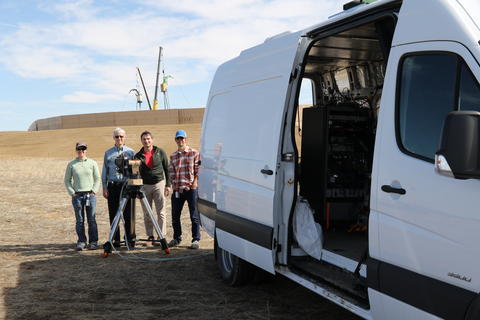
Investigating colors in the wind — NIST researchers expand beyond a current spectroscopy technique for measuring greenhouse gases to now detect volatile organic compounds in the atmosphere.
By shining a frequency comb laser over the air, scientists can see how molecules in the air absorb different colors (or wavelengths) of the light. Each molecule has its own color fingerprint on the light spectrum, so we can figure out which chemicals make up the atmosphere that the laser passed through.
Previous open-air frequency comb technology could only measure a few greenhouse gases at near-infrared light, but our team’s innovation takes us into the complex realm of mid-infrared. Many volatile organic compounds — like acetone, formaldehyde and the carcinogenic gas benzene — could potentially be measured here.
So what does this mean? Oil and gas companies could track their emissions in more detail, and public health departments could better measure air quality in their cities.
The best part: This complex system for measuring in the mid-infrared is portable for fieldwork, as shown in this snapshot of our team testing the instrument.
Last year, the team took a step toward commercialization by participating (and becoming one of four winners) in NIST’s Technology Maturation Accelerator Program. NIST’s Kevin Cossel pitched the innovation to a group of venture capitalists, who judged whether it could transfer into the marketplace.
Follow us on social media for more like this from all across NIST!

